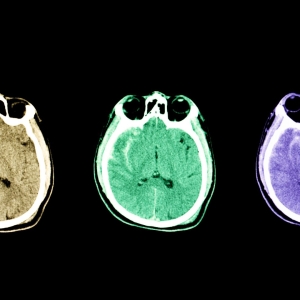 Author: MD, PhD, FEBN, Michele Romoli
Author: MD, PhD, FEBN, Michele Romoli
Neurology and Stroke Unit, Bufalini Hospital, Cesena, Italy
Twitter: @micheleromoli
Aneurysmal subarachnoid hemorrhage (aSAH) carries a risk of disability and mortality higher than 50%. Vasospasm develops in 70% of aSAH, but only half of them then develops secondary ischemia, which is prevented by nimodipine without clearly affecting cerebral vasculature[1]. The prevention of vasospasm and secondary brain injury is of paramount importance, but few strategies exist as our understanding of the early phenomena is still limited[2].
The EARLYDRAIN trial, published in June this year in JAMA Neurology[3], addressed the efficacy of a prophylactic lumbar cerebrospinal fluid (CSF) drainage in reducing unfavourable outcome (mRS 3-6) after aSAH. Of 287 included patients, 144 received early lumbar CSF drainage (5 ml/h started within 72h from aSAH, for at least 4 days) and 143 received standard of care, which could also include ventricular drain. Participants were comparable in terms of risk factors, and the analysis takes into account slight differences in intracranial hemorrhage rate and aSAH severity.
Although a similar amount of CSF was drained in both groups, patients in the lumbar drain group showed a lower intracranial pressure. No differences were noted in mean daily arterial pressure, fever burden, transcranial Doppler, hemoglobin levels, fluid intake, and fluid balance[3]. Regarding the primary endpoint, lumbar drain cut unfavourable outcome by 30% (unadjusted relative risk, 0.73; 95% CI, 0.51-0.98), a finding that equals a number needed to treat of 8.3 to avoid one unfavourable outcome.
Overall, the EARLYDRAIN study shows a significant benefit of lumbar drain in aSAH, with a magnitude of effect worth of consideration for implementation in current practice[3]. Several questions are now more open than ever. Is the hypothesis of heme degradation alone insufficient to explain vasospasm, as it was similar in both groups[4]? Are there primary immunological mechanisms for vasospasm and delayed cerebral infarction[2]? On the other side, is a definition of delayed cerebral ischemia and early brain injury needed to distinguish acute and medium-term effect of treatment? EARLYDRAIN opens the way to a treatment that can be directly implemented in our units, for a devastating disease with little – if any – preventive strategy for delayed sequelae.
—
References:
- Macdonald, R.L. Delayed Neurological Deterioration after Subarachnoid Haemorrhage. Nat. Rev. Neurol. 2014, 10, 44–58, doi:10.1038/nrneurol.2013.246.
- Romoli, M.; Giammello, F.; Mosconi, M.G.; De Mase, A.; De Marco, G.; Digiovanni, A.; Ciacciarelli, A.; Ornello, R.; Storti, B. Immunological Profile of Vasospasm after Subarachnoid Hemorrhage. Int. J. Mol. Sci. 2023, 24, doi:10.3390/ijms24108856.
- Wolf, S.; Mielke, D.; Barner, C.; Malinova, V.; Kerz, T.; Wostrack, M.; Czorlich, P.; Salih, F.; Engel, D.C.; et al. Effectiveness of Lumbar Cerebrospinal Fluid Drain Among Patients With Aneurysmal Subarachnoid Hemorrhage. JAMA Neurol. 2023, doi:10.1001/jamaneurol.2023.1792.
- Geraghty, J.R.; Davis, J.L.; Testai, F.D. Neuroinflammation and Microvascular Dysfunction After Experimental Subarachnoid Hemorrhage: Emerging Components of Early Brain Injury Related to Outcome. Neurocrit. Care 2019, 31, 373–389, doi:10.1007/s12028-019-00710-x.
ESOC is Europe’s leading forum for advances in research and clinical care of patients with cerebrovascular diseases. ESOC 2024 will live up to its expectation, and present to you a packed, high quality scientific programme including major clinical trials, state-of-the-art seminars, educational workshops, scientific communications of the latest research, and debates about current controversies. Learn more.



